PADnet is the most flexible peripheral artery disease (PAD) testing device in the market, offering a wide range of clinical measures to non-invasively identify circulation issues in the lower extremities.
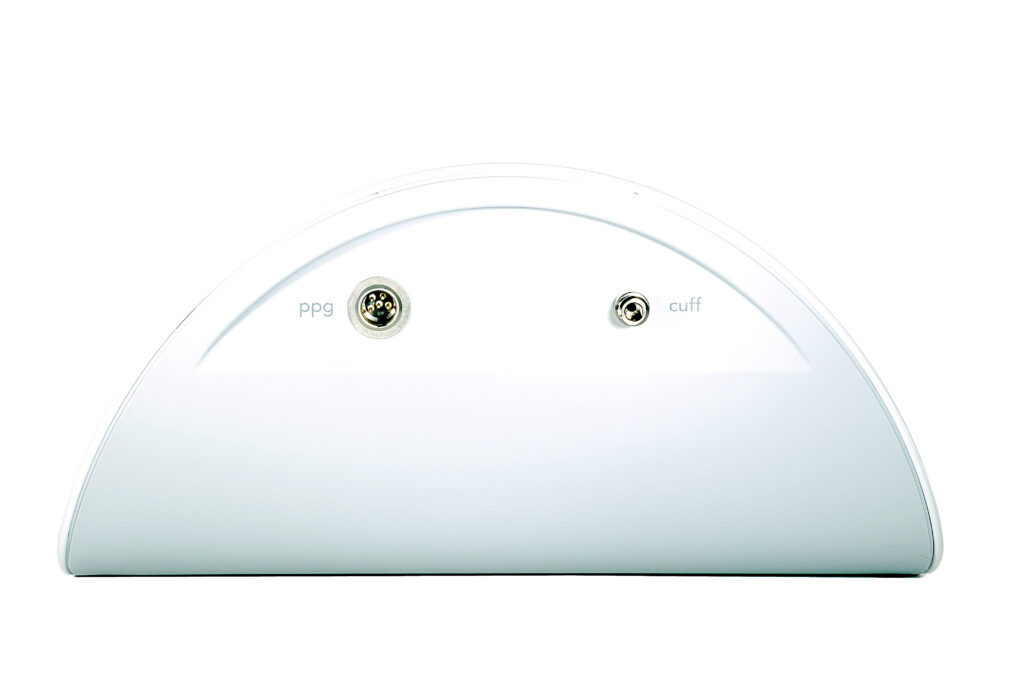
Ankle-Brachial Index
ABI
Pulse Volume Recording
PVR
Toe-Brachial Index
TBI
Venous Refill Exam
Venous
Segmental Blood Index
SBI
Stress Test
Post-Exercise
PADnet enables:
- Blood pressure to be calculated for both arms
- Blood pressure to be calculated at up to 4 levels in the lower extremities:
- above the knee
- at the calf
- at the ankle (posterior tibial and anterior tibial/dorsalis pedis)
- at the toe
- The dynamic, real-time display of blood flows at each level via Pulse Volume Recording (PVR)
- The digital storage and synchronization of all blood pressures and waveforms of blood flows
- The automatic calculation of ABI (Ankle Brachial Index), as well as the TBI (Toe Brachial Index)
- Storage and retrieval on a HITRUST-certified web portal
- Ability to track patent disease progression over time
- PAD testing to be performed by a medical assistant
- PAD test results to be interpreted via a web-based interface, or sent to a vascular specialist for interpretation
- Results to be exported to a PDF
- Bi-directional EMR integration
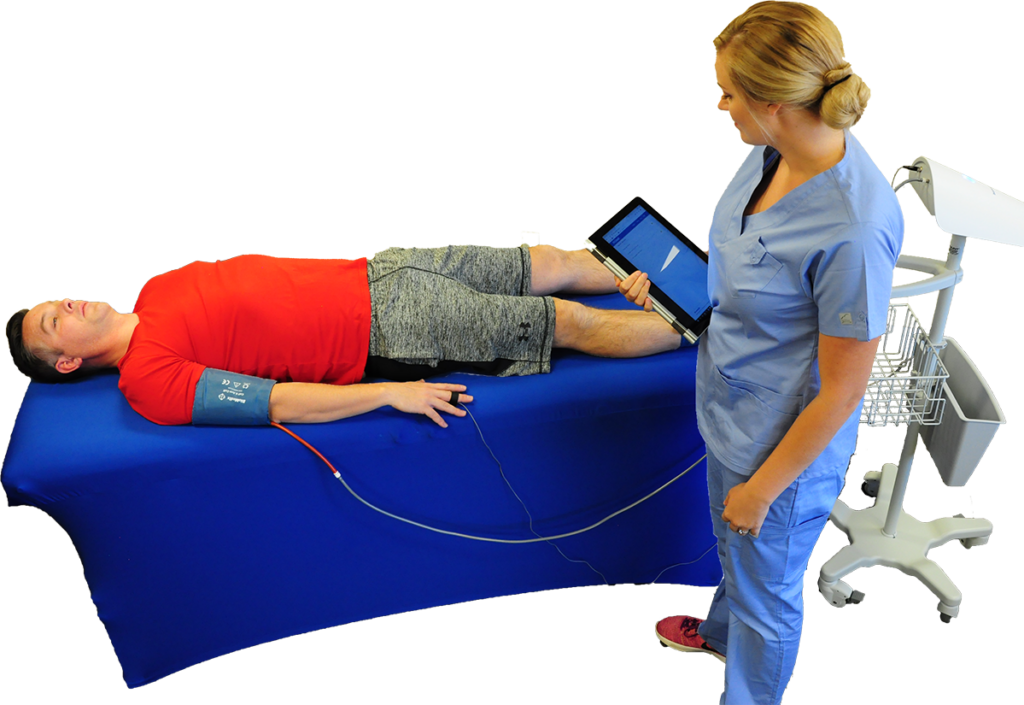
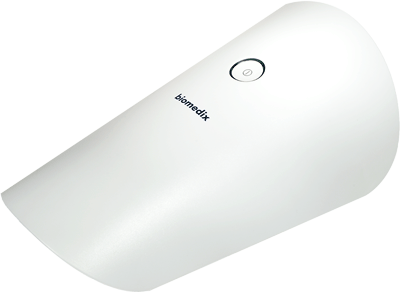
Ankle-Brachial Index - ABI
An ankle brachial index is part of a PAD test performed with PADnet by obtaining both brachial systolic blood pressures, and then dividing the higher of the two systolic blood pressures by both of the systolic blood pressures at the ankles. Systolic blood pressures can be performed using recording oscillometry, or through the use of a distal sensing device which is provided with the PADnet system. PADnet is compatible with doppler, for those who want to calculate vessel-specific systolic blood pressures.
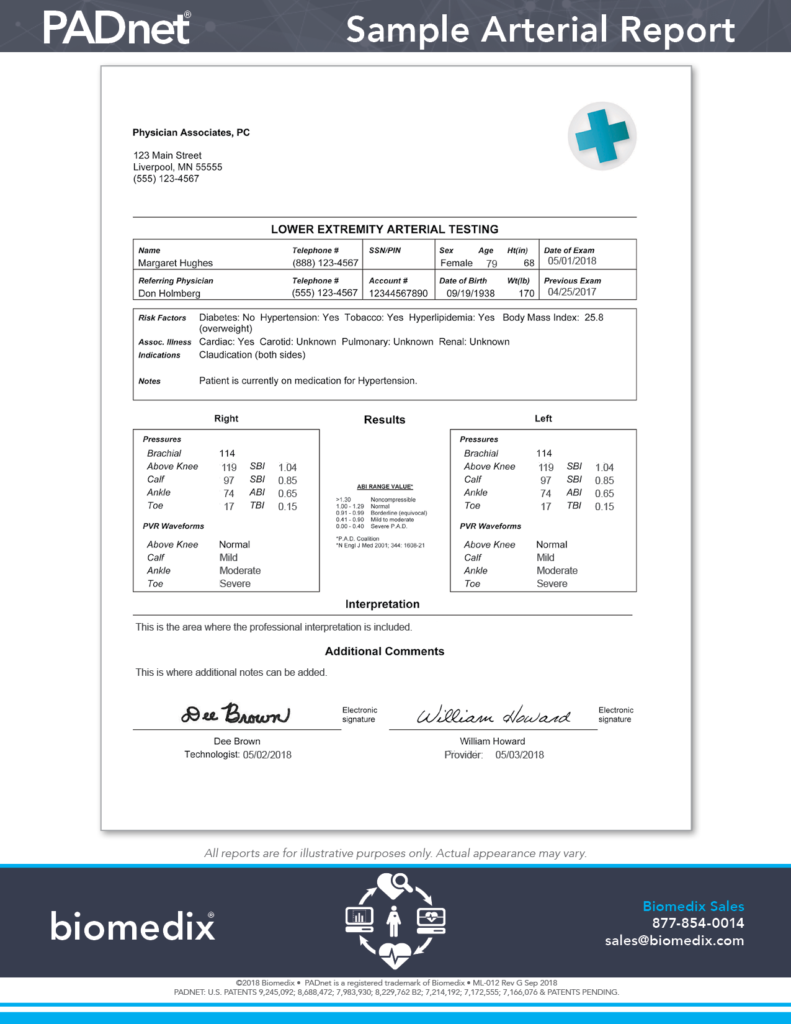
It’s important to get bi-lateral arm pressures to qualify for a true ABI, and differing arm pressures from one side to the other may indicate bloodflow issues in the upper extremities. The PADnet system automatically calculates the ABI based on the blood pressure values, and it’s included in the final report.
Pulse Volume Recordings-PVRs
PADnet enables PVRs to be recorded at 4 levels; above the knee, at the calf, the ankle, and the toe. Typically, 3 levels are required for reimbursement under CPT code 93923. PVRs involve applying blood cuffs to the various levels, and then inflating those cuffs to a consistent pressure of 65 mmHG to partially occlude the artery, allowing the bloodflow to be visualized to help identify, locate, and stratify disease[i].
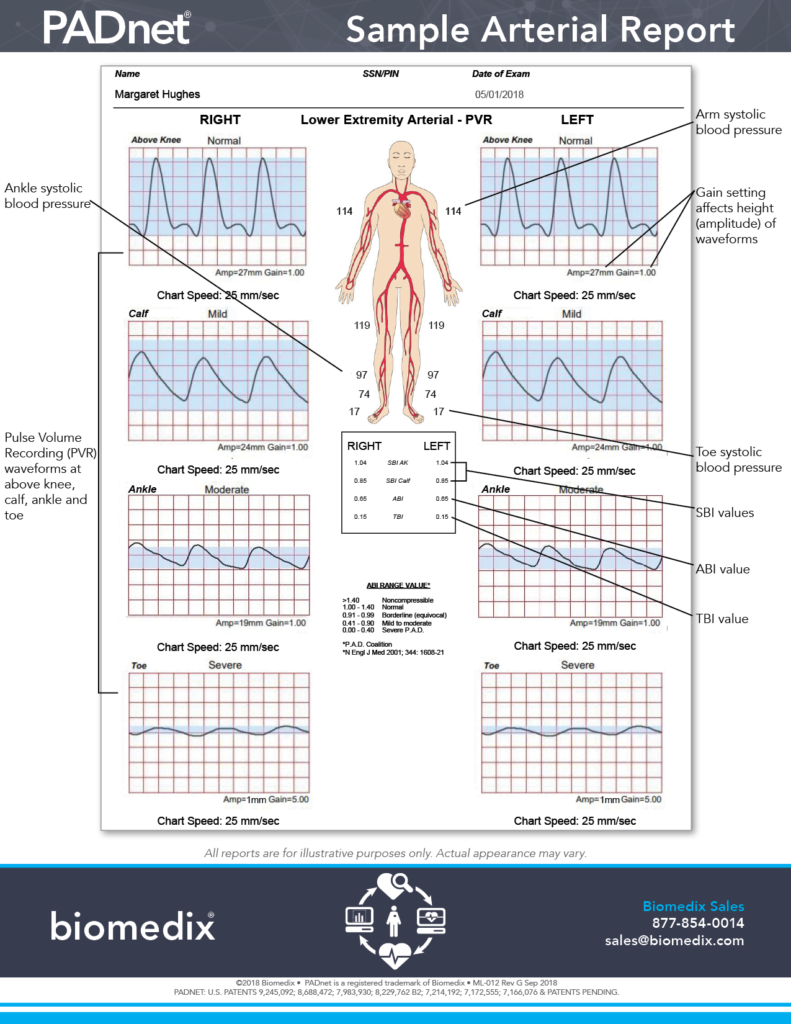
Toe-Brachial Index - TBI
PADnet can perform toe brachial indexes, which is very similar to the ABI, except the systolic brachial blood pressures are compared bilaterally with the toe systolic blood pressures. PADnet automatically calculates TBI when appropriate, and they show up in the PADnet PDF report.
PADnet offers a balance of flexibility and ease-of-use for PAD testing
PAD testing that may seem overwhelming, but we’ve found that each clinic has their own preferred testing protocol, which is why the PADnet automatically remembers the measures performed during the PAD test and the order in which they were performed.
[i] McCann TE, Scoutt LM, Gunabushanam G. A practical approach to interpreting lower extremity noninvasive physiologic studies. Radiol Clin North Am. 2014;52(6):1343–1357